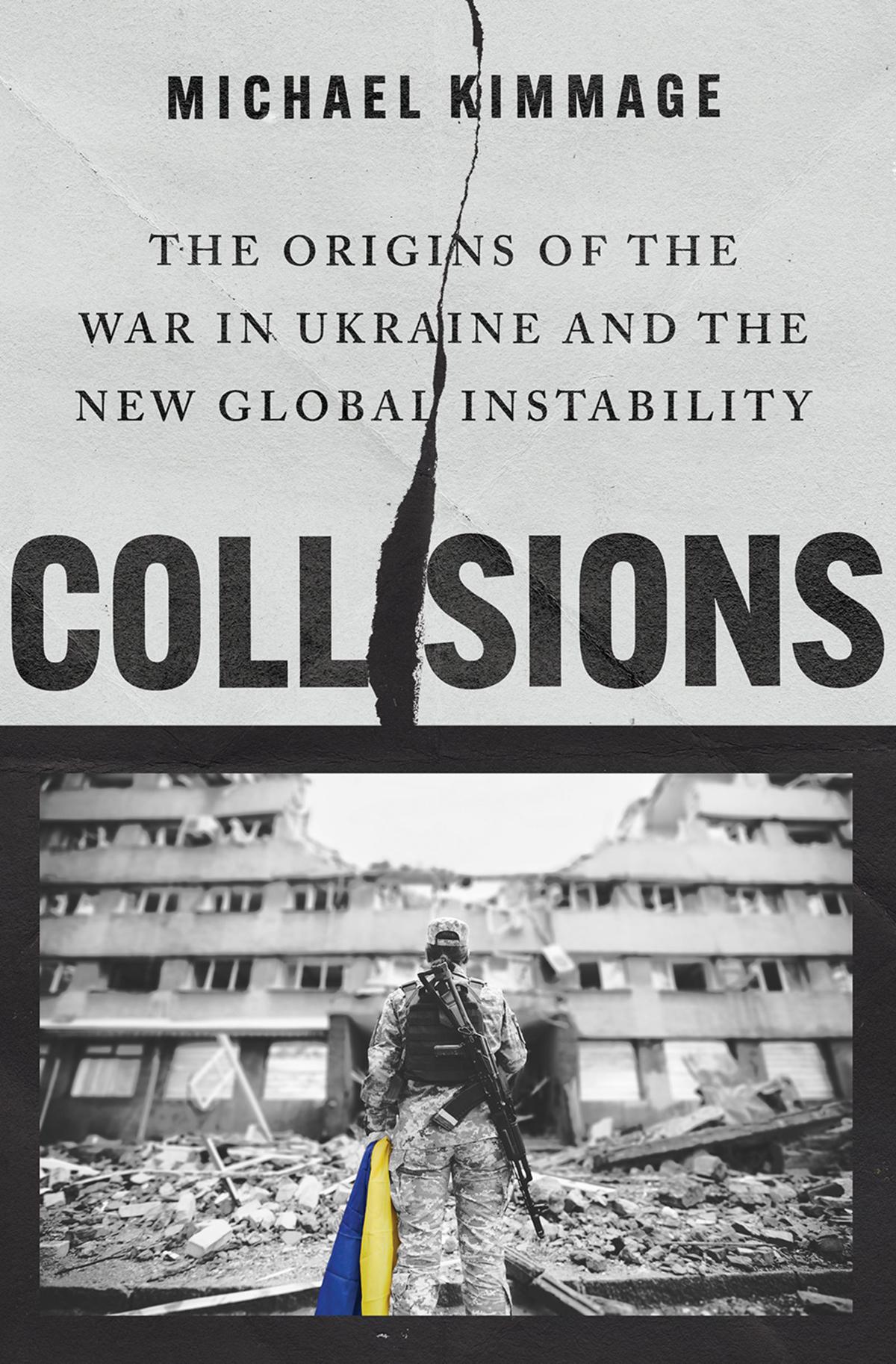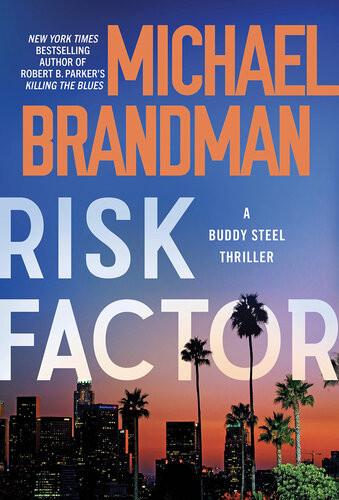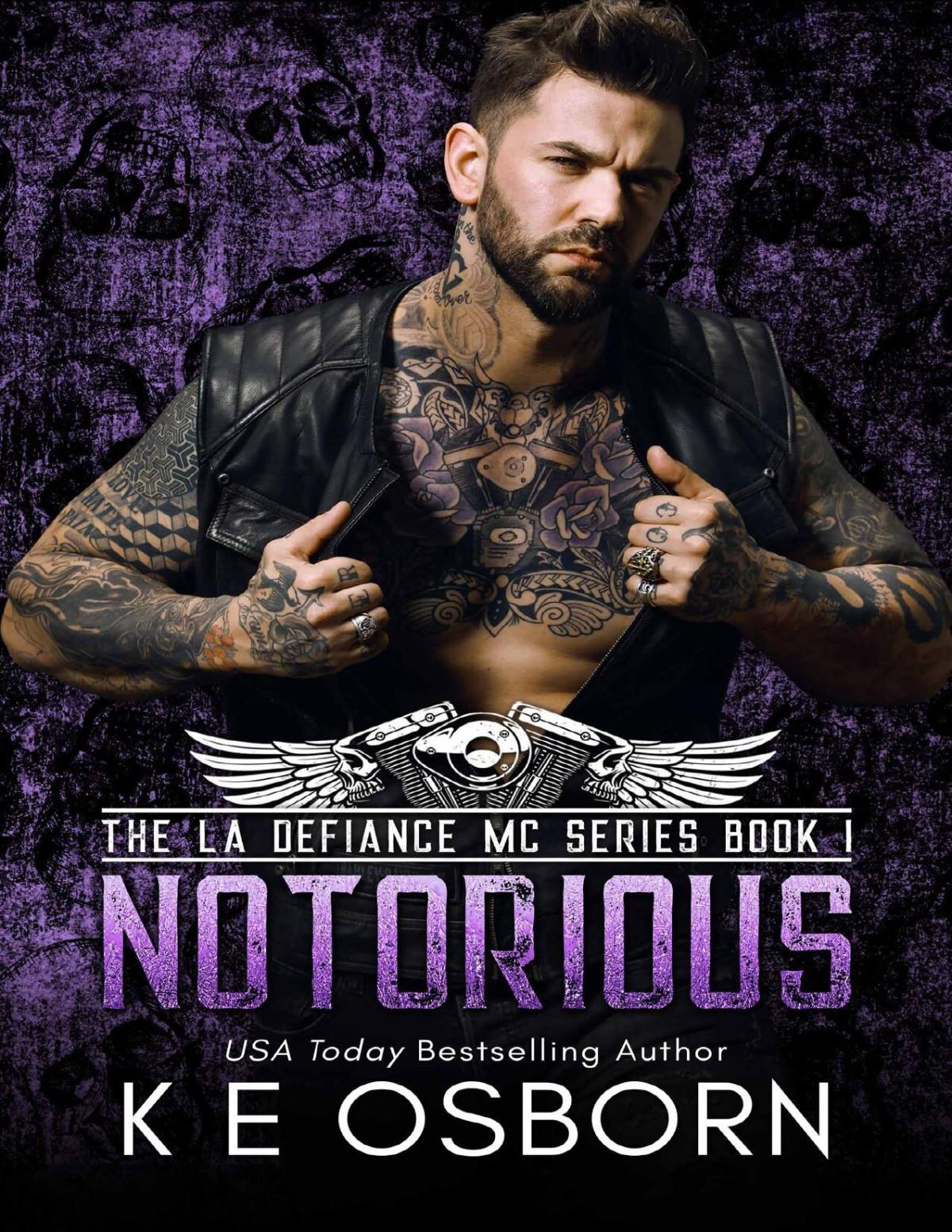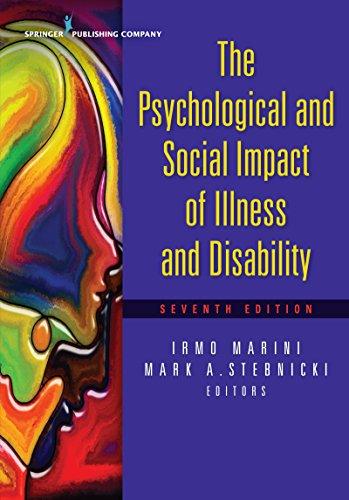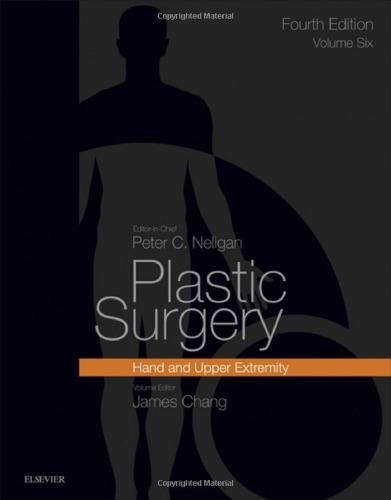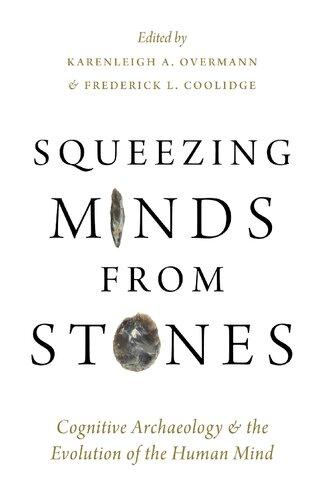Collisions
The Origins ofthe War in Ukraine andthe New GlobalInstability
MICHAEL
KIMMAGE
Oxford University Press is a department of the University of Oxford. It furthers the University’s objective of excellence in research, scholarship, and education by publishing worldwide. Oxford is a registered trade mark of Oxford University Press in the UK and certain other countries.
Published in the United States of America by Oxford University Press 198 Madison Avenue, New York, NY 10016, United States of America.
© Michael Kimmage 2024
All rights reserved. No part of this publication may be reproduced, stored in a retrieval system, or transmitted, in any form or by any means, without the prior permission in writing of Oxford University Press, or as expressly permitted by law, by license, or under terms agreed with the appropriate reproduction rights organization. Inquiries concerning reproduction outside the scope of the above should be sent to the Rights Department, Oxford University Press, at the address above.
You must not circulate this work in any other form and you must impose this same condition on any acquirer.
CIP data is on file at the Library of Congress
ISBN 978–0–19–775179–4
eISBN 978–0–19–775181–7
DOI: 10.1093/oso/9780197751794.001.0001
Dedicatedtomydaughters,EmaandMaya,andtothe convictionthatwecanlearnfromhistory
Contents
Preface
Acknowledgments
Introduction
PART I: OPEN QUESTIONS, 2008–2013
1. Yes We Can
2. The Allure of a Modern Russia
3. The Dilemma of a Modern Russia
PART II: PARTING WAYS, 2013–2021
4. Revolution Comes to Kyiv
5. War in Ukraine, Round 1
6. Russia, Russia, Russia
PART III: COLLISION, 2021–2023
7. The Search for Guardrails
8. Removing the Guardrails
9. War in Ukraine, Round 2
Conclusion
Notes
Index
It may be that the lack of a romantic element in my history will make it less of a pleasure to the ear; but I shall be content if it is judged useful by those who will want to have a clear understanding of what happened and, such is the human condition, will happen again at some time in the same or a similar pattern.
Thucydides, The Peloponnesian War, Book 1:22
Preface
On a Kyiv side street stands the residence of the US ambassador, an elegant yellow neoclassical building. Located in the fashionable Podil neighborhood, this small villa is close to the river that divides the city. A hilly park runs from near the residence up toward Saint Michael’s Golden Domed Monastery, which had been torn down between 1935 and 1936, when Kyiv was in the Soviet Union and when Joseph Stalin was in power. After Ukraine broke away from the Soviet Union in 1991, the monastery was rebuilt. Up the hill one walks from Podil to the monastery, past the statue of Bogdan Chmelnitsky, a symbol of Ukrainian nationhood and of independence from the Polish-Lithuanian Commonwealth. Down the hill one walks in another direction into the Maidan Square, the place where European history changed course in November 2013. It is a wide square or set of squares, too big to be medieval or early modern, a little bit like a calm Times Square, and ideally suited to public assembly. In November 2013, a protest movement took shape on the Maidan. An institution founded in the eleventh century, Saint Michael’s Monastery harbored protestors escaping a fierce government crackdown on the Maidan. In that November and in the December that followed, discontent built up until it issued in revolution. In the early months of 2014, this revolution issued in war. In January 2016, I attended a dinner with several State Department colleagues at the Kyiv residence of the US ambassador. An academic, I had joined the State Department’s Office of Policy Planning very late in 2014, months after the annexation of Crimea and amid heavy fighting in Ukraine’s east. The situation was superficially calmer in 2016, resembling neither war nor peace. Ukraine had settled into a period of stability after its revolution, drawing closer to Europe than it had been in 2013, though still far
from membership in the NATO alliance or in the European Union. The United States, ten months before the election of Donald Trump, was the country edging closer to revolution—unbeknownst to our State Department delegation in Kyiv that January, when Trump was not yet the Republican nominee. Taking a seat at the ambassador’s candlelit table were representatives of Ukrainian civil society; they were think tankers, activists, and academics. Among them was Mustafa Nayyem, a well-spoken advocate for Ukraine’s European path and for good reason a famous man. It was his Facebook posting that had brought a handful of people to the Maidan back in November 2013. In the beginning was his injunction not to accept the status quo, and his wish had been granted. The status quo—in Ukraine, in Russia, in Europe—did not survive the winter of 2013–14. In the course of our official visit, we met with many prominent Ukrainians. We spoke to the prime minister, Arseniy Yatsenyuk, who looked young and was effortlessly voluble (in English). We had a meeting with the major of Kyiv, Vitaly Klitschko. Gracious and irreverent, he was a former boxing champion who towered over his staff and over us. We sat down as well with Leonid Kuchma, Ukraine’s president from 1994 to 2005, one of the country’s founding fathers, a cagey intelligent man whose manner and appearance were vaguely Soviet.1 He was a reminder—in 2016—that independent Ukraine stood atop layers of complicated history. Kuchma’s father had been wounded in World War II. Born in 1938, Kuchma himself had joined the Communist Party, rising up the Soviet ranks until he drifted away from the communist project in the 1980s. Kuchma’s presidency was a period in which Ukraine was basically democratic but hardly free from government abuse of power, including at the hands of Kuchma and his associates. During his time as president, much of the country’s post-Soviet promise had been squandered, having been sold to the highest bidder. Yet in 2016 Kuchma had the virtue of being an ex-president. His successors had been elected, not installed, and power had been transferred to other leaders. The open question in 2016 was whether the work-inprogress Ukraine of Yatsenyuk and Klitschko would be different from
the struggling Ukraine of Kuchma, whether the past was prologue or whether it was truly past.
The most memorable of our many meetings in Kyiv was not with the political eminences of 2016 and of yesteryear. It was with a group of students from Taras Shevchenko National University and from the National University of Kyiv-Mohyla Academy, two of Ukraine’s elite universities. The students were eager to speak with us, to get the word from the State Department, and to give us their impressions of Ukraine after the Maidan. We discussed governance good and bad, and for quite a while we discussed Alexis de Tocqueville. Tocqueville was a European who, in dissecting American democracy, had emphasized the importance of “voluntary associations.” It was the stuff of seminars and almost a caricature of American diplomacy, with its transatlantic enthusiasm and its unquenchable fondness for democracy. Yet it was also—in a way it might not have been back in Washington, DC—the stuff of real life. It was to an imagined voluntary association that Mustafa Nayyem had appealed in his Facebook posting. Voluntary associations had driven the Maidan Revolution and proliferated in 2015, and they still mattered in 2016. Voluntary associations seemed to hold more appeal for these students than the government jobs that surely awaited them. Six years later, I am haunted by these brilliant young Ukrainians, by the curiosity, decency, and idealism they projected. In February 2022, all of them in their mid-twenties by then, they must have found themselves on the front lines of an unexpected and terrible war. Not surprisingly, a distinguishing feature of this war has been the voluntary associations spurring the Ukrainian war effort.2
Collisions is anything but a memoir or an eyewitness account. For two years, I was a mid-level functionary at the State Department, a “senior official” at best, but in reality, not much more than an observer of great events—during the initial phase of Russia’s war against Ukraine. Instead of journalism or autobiographical writing,
Collisionsis an early draft of the history that will one day be written about the 2022 war, which began in 2014, if not earlier. It is a narrative of the events that have culminated in a major European war and an inquiry into the causes behind these events. With this book, I have aspired to the objectivity of a scholar and to the conscious avoidance of advocacy: it is neither a justification of US policy nor a mea culpa. At the same time, while striving to provide an even-handed account of the war, I have tried to imbue Collisions with the immediacy of my government experience, focusing on the choices leaders and governments have made, on mistakes of judgment and of prediction, on triumphs of judgment and prediction, on the play of personality that is so determinative for diplomacy, on the economic and political constraints under which governments operate, and on the clash of ideas between Russia and the United States, going back not just to the 1990s but to the Cold War. Washington and Moscow fiercely disagree about politics and about Europe, and they have disagreed on these points for time immemorial, which is an invitation to historical reflection. Without this disagreement in the background, there might well have been a war but there would have been no global collision over Ukraine in 2022.
In the writing of this book, I have had an illustrious model in mind. In the first sentence of The Peloponnesian War, its author describes himself as “Thucydides of Athens [who] wrote this history of the war fought against each other by the Peloponnesians and the Athenians.” Then he continues, as if writing about someone else: “He began his work right at the outbreak, reckoning that this would be a major war and more momentous than any previous conflict.” Thucydides had been a general in the war and was a witness to a few of the events he mulled over as a historian. With some transposition, his famous explanation of the Peloponnesian War eerily anticipates Russia’s 2022 war against Ukraine: “In my view the real reason, true but unacknowledged, which forced the war was the growth of Athenian power and Spartan fear of it.” Both the deep underlying causes and the “openly proclaimed grievances,” the acknowledged disputes that led directly to the war, fascinated
Thucydides, but most important were the underlying causes.3 Enamored of its openly proclaimed grievances, Russia did not precisely fear the growth of Ukrainian power in 2022. Putin feared the alignment of Ukraine with Western power. It would be as valid to say that he resented this alignment, that he perceived it as a personal affront. This fear and this resentment forced the war. In the fifth century bce, Thucydides of Athens did not write to validate Athenian power (or Spartan fear). He wrote in order to understand such power and such fear, to understand this double helix of force and emotion, which is the prime mover of international relations. More than two millennia after it was written, ThePeloponnesianWar is not just a good book. It is still a relevant book.
Two caveats about Collisionsare worth noting at the outset. It is not a history of Ukraine. I do not have the linguistic or academic background to write the history of Ukraine as such. My training is as a historian of the Cold War with three points of emphasis: the history of Russia and the Soviet Union, the history of Europe, and the history of the United States. I have done what I can to link the history of Ukraine, which lies at the heart of the 2014 and 2022 wars, with the European, Soviet, Russian, and US material that is more familiar to me. This helps with the global frame that the 2022 war requires. It is, however, a necessarily partial interpretation of the war. Another caveat is that as time passes, historians will gain access to more and better information about the war, bringing greater empirical heft and more grounded insight to the question of why it broke out. Eventually, historians will know how the war ends, which will help them to assess the changes wrought by the war. I envy these historians, but I also see the value in picking up the historian’s pen “right at the outbreak” of a war—rather than waiting for a finality that will be a long time coming. In their radicalism and in their horror, wars threaten to erase history, to rush past history or to render it invisible, to substitute ephemeral news cycles and jittery rumors for historical context and analysis, especially when the outcome of a war is not yet in sight. To prevent such erasure and to move toward a reasoned understanding, wars must be approached
as events in history before all the archives can be assembled, all the monuments erected, and all the museums built, and even before the guns have fallen silent.
Acknowledgments
Written in haste, this book was nevertheless years in the making. Its origins lie in the two years I spent at the State Department Office of Policy Planning. There, from 2014 to 2016, I was fortunate to have as colleagues Lauren Baer, Max Bergmann, Charles Edel, Eddie Fishman, Ziad Haider, Andrew Imbrie, Arslan Malik, Drew McCracken, Amanda Monsour, Jonathan Stromseth, Bart Szewczyk, Jonathan Temin, Ian Klaus, and my brother, Daniel Kimmage. I was equally fortunate to have as bosses David McKean, and Jon Finer. The collective standard of excellence at Policy Planning gave me an invaluable education in policy formation, which is a primary theme of this book.
Since 2014, I have had the good fortune to work on issues related to Russia, Ukraine, and Europe at the Wilson Center’s Kennan Institute, the German Marshall Fund, and at the Center for Strategic and International Studies. Colleagues at these and at other think tanks have added immeasurably to my understanding of international relations and of US–-Russian relations. They include David Cadier, Sam Charap, Derek Chollet, Heather Conley, Karen Donfried, Joe Dresen, Matt Duss, Jeff Edmonds, Nick Fenton, Jeff Gedmin, Jim Goldgeier, Fiona Hill, Jonathan Katz, Andrea KendallTaylor, Margarete Klein, Hans Kundnani, Miriam Lanskoy, Robert Legvold, Eric Lohr, Jeff Mankoff, Jade McGlynn, Julie Newton, Olga Oliker, Victoria Pardini, Will Pomeranz, Matt Rojansky, Eugene Rumer, Kori Schake, Jeremy Shapiro, Maria Snegovaya, Mary Sarotte, Constanze Stelzenmueller, Angela Stent, Izabella Tabarovsky, Jan Techau, Andrew Weiss, and Stephen Wertheim.
The editors at Foreign Affairs—Daniel Kurz-Phelan, Justin Vogt, Hugh Eakin, Kate Brannen, Kanishk Tharoor, Stuart Reid, Elise Burr, and many others—have done so much to help me to formulate my
own thinking about the war and about international affairs. It has been a joy to work with them. The same is true for my cherished coauthors in the pages of Foreign Affairs: Michael Kofman, Maria Lipman, Hanna Notte, and Liana Fix, all of whom are also friends. Conversations with Josh Yaffa, Valerie Hopkins, Linda Kinstler, Anton Troianovsky, and Keith Gessen are always illuminating; so too is reading their writing.
As was the case (by now) with three of my previous books, conceptualizing Collisions was jumpstarted by time spent at the Center for Advanced Studies at the Ludwig Maximilian University of Munich, where Annette Meyer and her colleagues provided their signature intellectual hospitality and day-to-day sociability. Their doing so in the summer of 2021, during a pandemic not always conducive to reading and writing and thinking, holds special importance for me. It was a rare gift.
Great thanks to Professors Michael A. Reynolds and Jennifer Wistrand for invitations to discuss this book at Princeton University and at the Miami University of Ohio, respectively. Thanks as well to Luiza Bialasiewicz and George Blaustein for instruction on European affairs and to Stephen Kotkin for his mentorship. Anna Vassilieva is a dear friend and colleague in the academic domain: she made it possible for me to start writing this book beneath the blue California sky. Conversations with Jeremi and Zachary Suri did much to shape this book. I am grateful to the many non-expert audiences I have had the opportunity to address while writing Collisions. Peter Schmidt in particular does wonders bringing serious talk to the general public. Questions from this public are the point of departure for Collisions.
Catholic University, especially Dean Thomas Smith and Associate Dean Caroline Sherman, has tendered much support for this book, some of it material and some in the form of non-material encouragement.
It was a pleasure to work with my agent, Don Fehr, on the idea behind this book and on its journey into print. David McBride has been a wonderful editor, and he belongs to an expert crew at Oxford University Press.
My parents, Ann and Dennis Kimmage, have a hand in this book. They may not agree with all of its arguments, but they provided the foundation for it to be written, which is their capacious interest on all of the regions and themes covered in Collisions. Avid students of twentieth-century history, they are always finding ways to relate it to twenty-first-century developments, making them my best teachers. Collisions is dedicated to my daughters, Ema and Maya, who in countless ways have made it worth writing and brought happiness to the writer. When they are adults, they will be able to regard the collisions of 2022 and 2023, which we all lived through in real time, as history, and they can learn from them as history. My wife, Alma, may not fully accept (or fully forgive) the title of this book, but she brought her wit, her wisdom, and her kindness to the task of getting it across the finish line.
Introduction
The Anglo-American relies upon personal interest to accomplish his ends, and gives free scope to the ingrained strength and commonsense of the people; the Russian centers all authority of society in a single arm. The principal instrument of the former is freedom; of the latter, servitude. Their starting point is different, and the causes are not the same; yet each of them seems marked by the will of heaven to sway the destinies of half the globe.
Alexis de Tocqueville, Democracy in America [1833]1
“Beware the Ides of March,” a soothsayer remarks in Shakespeare’s Julius Caesar, warning of that moment in March when everything would go wrong. Julius Caesar, who should have paid heed, carries on to the Senate and is assassinated. A twenty-first-century soothsayer might have focused on February rather than March. Back in the twentieth century, February was an ill-omened month for Europe. According to the Russian empire’s Julian calendar, Czar Nicholas II found himself impossibly embattled in February, the Russian army disintegrating all around him, the social order turning in upon itself. On February 23, 1917, Nicholas II ended the Romanov dynasty, launching the “February Revolution” and a long time of troubles for Russia—with enormous repercussions for a Europe itself awash in revolution. A provisional government would be overthrown by the Bolsheviks in the more famous October Revolution of 1917, giving birth to the Soviet Union after several years of civil war. On February 24, 2022, Russia launched a massive invasion of Ukraine, shattering normal life across this country, dragging Europe back to the misery of full-scale war and plunging US-Russian relations into permanent crisis. The February 2022 invasion was a wrinkle in political time, a caesura, a rupture, and the termination of the thirtyyear period that began with the Soviet Union’s collapse in 1991, three of the most peaceful, most promising, most prosperous
decades in European history. Caution was warranted in the tense months of diplomatic back and forth that preceded war in 2022.
Caution was warranted in January 2014 as well. Eastern Europe was not an obvious crisis zone at that time, and nobody had expected Viktor Yanukovych, the unimpressive president of Ukraine, to flee the country. In Ukraine and throughout Eastern Europe, he was a familiar type. Yanukovych had grown up in eastern Ukraine, a young man in trouble with the law. He adopted some of his political style from the local mafias—those that had proliferated after the fall of the Soviet Union—and as his career went forward, he made little effort to shed his past. Ukraine’s president since 2010, Yanukovych understood the politics of personal gain and the art of quid pro quo. When in the mood, he advocated a European path for Ukraine. He was also comfortable with a Ukrainian tilt toward Russia, for which there was some foundation in a country historically intertwined with Russia, and this made him an attractive partner for Russia’s president, Vladimir Putin. Yanukovych did not have Putin’s hunger for glory or Putin’s consuming grievances. Yanukovych was not obsessed with his historical legacy or even with high politics as such. No Julius Caesar, he was out to muddle through and to squeeze what he could from Ukraine, and with his self-serving, provincial, and essentially criminal mindset, Yanukovych purchased Putin’s benign neglect. Putin let Ukraine be, while Yanukovych lined his pockets. More than political allies, they were partners versed in self-dealing and survival.
Yanukovych’s relationship with Putin explained a curious aboutface Yanukovych made in November 2013. For months, Yanukovych had been on the verge of signing an Association Agreement (AA) with the European Union. The agreement did not entail membership in the EU, which was at best a distant prospect for Ukraine in 2013. The AA was more prosaic than that. It concerned the EU as a system for managing and regulating trade. The AA would open European markets to Ukraine by aligning Ukraine’s rules and regulations with those that were set in Brussels: its culmination was to be a DCFTA or Deep and Comprehensive Free Trade Agreement. The AA and the DCFTA would give substance to the image of a European Ukraine. To the east, Ukraine bordered Russia; to the north, Belarus; and to the
west it bordered multiple EU member states—Poland, Slovakia, Hungary, Bulgaria, Romania. It made perfect economic sense to draw closer to them. It was a step toward European markets or toward a vision of Europe, which, once finalized, could lead to further steps in the same direction—Europe the summit of normalcy, modernity, and prosperity. By 2013, Ukraine had long ago left the Soviet Union, and in 2013 Ukraine was in its twenty-second year of sovereignty and statehood. Why not affirm Ukraine’s place in Europe, long a geographic and historical fact, whatever the word “Europe” had meant over the ages and whatever it might mean in the fall of 2013?
Well before the Ides of February, in late November 2013, Yanukovych had traveled to Vilnius for an EU meeting. Prior to arriving in Lithuania’s capital city, he had admitted he would notsign the AA, but some uncertainty about his decision lingered on; he was still scheduled to show up in Vilnius. Putin had been pressuring Yanukovych not to sign. Quite possibly private threats had been voiced. Putin openly offered some $15 billion to Yanukovych if he could save Ukraine from sliding into Europe, an incentive to sweeten Moscow’s strong-arm diplomacy. In the fall of 2013, the world was not waiting to see what would happen in Vilnius. Ukraine was not then center stage, and the fate of Europe did not hinge on the question of whether Ukrainian fisheries were to be regulated according to EU or non-EU standards. The EU itself could seem a layering of bureaucracy on bureaucracy, rule on rule, agreement on agreement, something slow, stodgy, boring. Pro-European in his own eyes and very much aware that many in Ukraine looked admiringly toward the EU, Yanukovych wavered. He would have preferred not to choose between Russia and Europe, keeping his options open, but the time for choosing had finally come. At the moment of truth, he went with Moscow. It was the more intuitive choice for Yanukovych, the more familiar choice, and it was the more immediately lucrative choice.
Back in Ukraine, the protests started small. They were not just about the EU Association Agreement. They were also about its symbolic meanings and about the poignantly un-bureaucratic
questions embedded within the symbolism. Where did Ukraine’s future lie? What would Ukraine be inside of Europe? What would Ukraine be outside of Europe? And who were Ukrainians? Yanukovych had many abuses of power on his conscience and even more on his record. His past misdeeds mattered when he found himself the focal point of an unpopular decision—especially with younger Ukrainians, whose aspirations to join Europe (and not just to finalize an Association Agreement with the EU) mingled with anger at Yanukovych’s abuses of power and at his coziness with Putin, who was after all a foreign leader. The protests grew and grew. Unable any longer to sign the AA, having delayed his decision until he could delay no longer, Yanukovych was flummoxed by the protests. From the beginning, he employed violence, further stimulating the appetite to protest. In January and February of 2014, his orders to shoot protestors backfired. He was an inept dictator, and the protests not only continued but expanded until in only a few months, he had lost his grip on power. On February 21, 2014, the president of Ukraine abandoned his gaudy home outside of Kyiv and left in hiding for eastern Ukraine, then for the Crimean peninsula, then for Russia, running unsurprisingly into Putin’s arms. Even his escape from Ukraine was a zigzag.
Over time, the low comedy of Yanukovych’s escape came to resemble the curious drama of Archduke Ferdinand’s assassination in June 1914. A seemingly random occurrence on Europe’s periphery, an accident that somehow precipitated a major European war, had taken place exactly a hundred years earlier in Sarajevo. It all unfolded faster in the twentieth century than it did in the twentyfirst. By August 1914, the world was at war, whereas Europe’s first major twenty-first-century war was eight years in the making. What could be ignored by some in 2014—and what was ignored by many —could not be ignored by anyone in 2022, when Russia lunged at Kyiv, sending tank and infantry sorties into Ukraine’s north, east, and south, accompanied by missile strikes and aerial bombardment. Ukraine is Europe’s second biggest country after Russia (if Russia counts as Europe). Ukraine is roughly the size of Texas or of France, its population around 40 million people. In February 2022, the
Kremlin dreamed of conquering half the country. It had assured itself that Ukraine’s government was the artificial construct of the United States and of a handful of Ukrainian nationalists. Perhaps Ukraine was a house of cards like the Western-backed Afghan government that had so unceremoniously collapsed in August 2021, when the Taliban appeared on the outskirts of Kabul and Afghanistan’s USbacked president slipped into exile. Putin intended to rewrite the rules of international politics, making it a game played by great powers, and to reinscribe the rules of Russian history on the territory of Ukraine, making it once again a part of a Russian empire. Long suppressed countries like Russia could finally exert themselves and call the shots in their neighborhoods, while a decadent, exhausted United States and its anemic European allies walked the gangplank of decline.
Putin made many miscalculations in February 2022, underestimating Ukraine and overestimating his own military. He did get one thing right. His war would be the start of a new era, newly dangerous and newly bloody. It would substitute a Russian-initiated phase of instability for the languorous Pax Americana that had come to Europe in the 1990s. In his own eyes, Putin’s invasion would be a February Revolution guided by a Russian leader’s foresight and agency rather than by the defeat and the abdication of power that had broken Russia in February 1917.
No war begins at an opportune moment. World War I arose from a Europe mostly at peace with itself and very much enjoying the pleasures of globalization, which had bankrolled the Belle Époque, a turn-of-the-century European renaissance. World War II took Poland, France, and Britain largely by surprise. Without knowing it, Europe’s great powers had not kept pace with the German war machine. It was the luck of the Allies that the British could evacuate their soldiers at Dunkirk; that the Soviet Union did not fall in 1941, when Hitler invaded; and that the United States got pulled into the war, when Japan attacked Pearl Harbor. In 1947, the Cold War was
wanted by nobody—not by Moscow, not by Washington, not by Europe. It proceeded from years of limitless destruction, the European continent in ruins, millions of refugees wandering from place to place, the Soviet Union barely recovered from its wartime losses in the mid-1940s, and the United States preoccupied with labor unrest and with its default instinct not to go out in search of monsters to destroy.2 Europe’s major modern wars have all been inopportune since they have rippled directly and indirectly outward, drawing in millions of non-Europeans. Europe’s wars have been more than inopportune for the countries engulfed in them, for the populations suffering invasion from without, for the countries unprepared militarily and for the countries unprepared psychologically, as France was unprepared in the summer of 1940 and as the United States was unprepared in the winter of 1942.
February 2022 was another such inopportune moment for war. Ukraine had been subjected to the evils of war since 2014, to Russia’s prior annexation of Crimea and invasion of eastern Ukraine, a few of the many consequences of Yanukovych’s February flight from office. For eight years, Ukraine had been forced to live with the uncertainties and the anxieties of an unended war. Back in 2014, Ukraine had been among Europe’s poorest countries, rural Ukraine in particular. Not authoritarian, its political system was still post-Soviet, thin on rule of law and burdened by a kleptocratic ruling class. Its political imperfections notwithstanding, Ukraine was making its way after 2014 as it had been since 1991; it was moving ahead. It was building bridges to international markets and to European institutions, making technological advances. It was culturally and politically vibrant, with a will to move beyond its twentieth-century past and to piece together a better future. The last thing Ukraine needed in 2022 was a brutal war—and a brutal war administered by an adversary with nuclear weapons, with Europe’s biggest conventional military, and with a leader, Vladimir Putin, who did not believe in the existence of a Ukrainian state or in the integrity of a Ukrainian culture. Though they quickly adjusted, Ukraine’s leadership
and population were not psychologically prepared for the war Russia unleashed in 2022.
Ukraine’s president in February 2022 was Volodymyr Zelensky, a man not previously steeped in war. Ukraine’s first post-Soviet leader, he was no former apparatchik or KGB officer, and he was no oligarch. The Ronald Reagan or the Arnold Schwarzenegger of Ukraine, Zelensky had come to prominence as an entertainer.3 He was a performer and producer, and in a textbook case of life imitating art he had made and starred in a television show, Servant of the People, which ran from 2015 to 2018. It featured Vasyl Holoborodko, a history teacher whose rant about corruption goes viral when a student films it and puts it on social media. This newfound celebrity results in his becoming—against all odds—the president of Ukraine. Zelensky followed in the footsteps of his goodhearted fictional alter ego, winning a well-administered election on April 21, 2019. Representing a new departure and himself a young man, Zelensky had a great deal to overcome in 2019, and three years later he was in a tough political spot. This too had been anticipated in ServantofthePeople: it is not easy for an honest man to serve the people. As president, Zelensky was smaller than Ukraine’s oligarchic political system, more dominated by it than he was able to dominate the system, and in 2022 he was no closer to bringing Ukraine into NATO or the EU than his presidential predecessors had been. Zelensky’s approval ratings were middling in January 2022. Right until the war began, he was insisting that there would not be a war.
Ukraine’s European neighbors were no better prepared. Europe had witnessed many wars since 1945: civil wars; separatist movements; invasions (Hungary in 1956, Czechoslovakia in 1968); the bitter conflicts in former Yugoslavia in the 1990s; expeditionary wars in Mali, Iraq, Libya, Afghanistan; and of course, the shooting war in Ukraine that had run from February 2014 to February 2015 without ever getting adequately resolved. War shadows the history of Europe, a never-ending succession of violent contestations, but by 2022, many Europeans had convinced themselves that the future of
Europe was a future of perpetual peace.4 Dropping their swords for plowshares, France and Germany had set aside their centuries-old differences. So had Germany and Britain. So had Germany and Poland, and on and on it went, the shocking story of a Europe that had finally understood the hazards of war and the harmonies of peace. A Germany hostile to war was one pillar of the new Europe, and an EU hospitable to integration was another—the same integrationist EU Viktor Yanukovych had tip-toed up to in 2013 before he took Vladimir Putin’s advice and turned down the Association Agreement. Europe was unprepared for war in 2022 in large part because it did not believe a major war in Europe was possible. Europe was unprepared—psychologically, intellectually, militarily—for the terrifying revelations of February 2022.
Europe faced a challenge other than war in 2022. It was in between cycles of political leadership. In 1989, a remarkable group had coalesced in Europe: Helmut Kohl in Germany, Francois Mitterrand in France, Margaret Thatcher in the United Kingdom, Lech Walesa in Poland, and Václav Havel in Czechoslovakia.5 Together they fashioned a post-communist Europe, a Europe of independent nation-state democracies, a civilized Europe that had evaded the demons of petty nationalism and world war. In 2022, no such cadre of leaders existed. In Germany, Angela Merkel had just retired after sixteen years at the center of European politics, a canny German leader more than she was a great European leader. Italy was governed by a technocrat, by a man without a movement or a party behind him. Having departed from the European Union, the United Kingdom was governed by a man mired in a scandal no less urgent for its absurdity: Boris Johnson’s hypocritical flouting of pandemic lockdown rules. France had Europe’s most visionary leader in Emmanuel Macron, but one who did not always have the mandate (outside of France and not always inside of France) to act on his expansive ideas. Poland and Hungary were European outliers. Skeptical of the “European project,” they could be dismissive of the EU as too accepting of immigrants and not accepting enough of Christianity. They were less dismissive of the EU’s financial support
for Poland and Hungary. Hungary’s Viktor Orban and Poland’s Andrzey Duda enjoyed inveighing against Brussels and Berlin. Where was the European center in 2022? Not quite in Brussels, not quite in Berlin, not quite in Paris, and definitely not in London. Europe was missing a center.
Across the Atlantic, the United States was a mystery to itself and to others in 2022. On the surface, the United States was what it had almost always been. It was globally engaged and invested in order and stability. The Biden administration was speaking self-confidently in the name of democracy. It was an excellent partner to Europe, a supporter of the NATO alliance and a firm believer—unlike such European countries as Poland and Hungary—in the European project. The more integration the better. Harry Truman and Dwight Eisenhower would have easily recognized this United States. Beneath the surface, the United States was in the grips of a difficult-to-define malady. Its political culture had splintered into pieces. The man who had lost the 2020 presidential election could not admit his loss, while many of his supporters could not admit that he was lying about his loss. A few of these supporters had stormed the US Capitol on January 6, 2021, almost disrupting the transfer of power from Donald Trump to Joe Biden, a near-death experience for the American Republic. Biden, who rejected everything about Trump and promised greater foreign-policy competence, bungled the US departure from Afghanistan in August 2021. A month later, he managed to alienate France after a stretch of secret diplomacy related to Australia and nuclear submarines. An abiding mystery was all that had changed in Washington since the 1990s, when the world had only one superpower, a democracy intent on exporting democracy.
In the enigmatic United States, the 2020 election had not been haunted by war in Europe. Mercifully, it was not an election about Russia, which had acquired a sinister hold on the American political sub-conscious in 2016: the never-ending accusations that Trump was a Russian asset; the weird connections between Russia and Trump’s campaign and personal entourage; the nervous awareness that Russia had meddled in the 2016 American election and was
poised to do so again in 2020. Perhaps it was the COVID pandemic of 2020 that broke the Russia fever. If so, the beneficiary was Joe Biden, whose appeal was his familiarity and his normalcy. He was not abnormally linked to Russia, not abnormally enraged by Russia, not abnormally interested in Russia. When he entered the White House in January 2021, Biden did not prioritize Russia; nor was he expected to by his party or electorate. His foreign-policy agenda was to manage the global repercussions of the pandemic and to orient the US government and American society toward containing climate change, an agenda as much domestic as diplomatic. Most important, perhaps, Biden wanted to succeed in the worldwide competition with China, whether that meant building alliances in Asia or considering industrial policy at home or exploring the subtleties of deterring China from invading Taiwan. In January 2021, a war with Russia was closer to science fiction than it was to policy planning in Washington. The war for which the United States was conspicuously starting to prepare in 2021 was a war in Asia.
Though a war of choice for the Kremlin, Putin’s invasion came at an inopportune moment for Russia too. The country had vast internal problems. It was rigidly unequal, much of its wealth concentrated in the country’s two major cities, Moscow and Saint Petersburg, while the rest of Russia lagged behind.6 Russians often did well outside of Russia, but Russia was not itself a center of great business or technological innovation. Its government had the telltale hallmarks of oil wealth—the underinvestment in human capital and the co-existence of wealth with stagnation. War would help with none of the country’s structural challenges. Nor had Russians been whipped into a frenzy before the February 2022 war. Putin had built his regime on apathy, on a lightly coerced and wan patriotism, on a population unaccustomed to ideological or to wartime mobilization. Before the war, Putin spoke of ruthless NATO expansion and of a Ukrainian “genocide” directed against ethnic Russians in Ukraine, but NATO posed no direct threat to Russia and there was no genocide taking place in Ukraine. It was not just an untrue narrative. It was not an especially persuasive narrative. Once the war began, Putin

